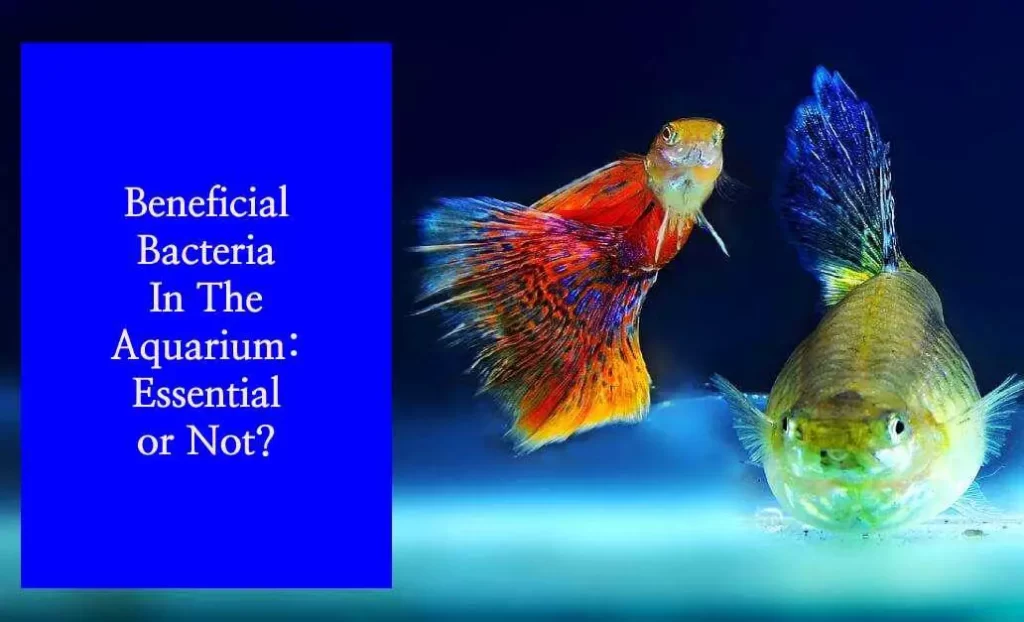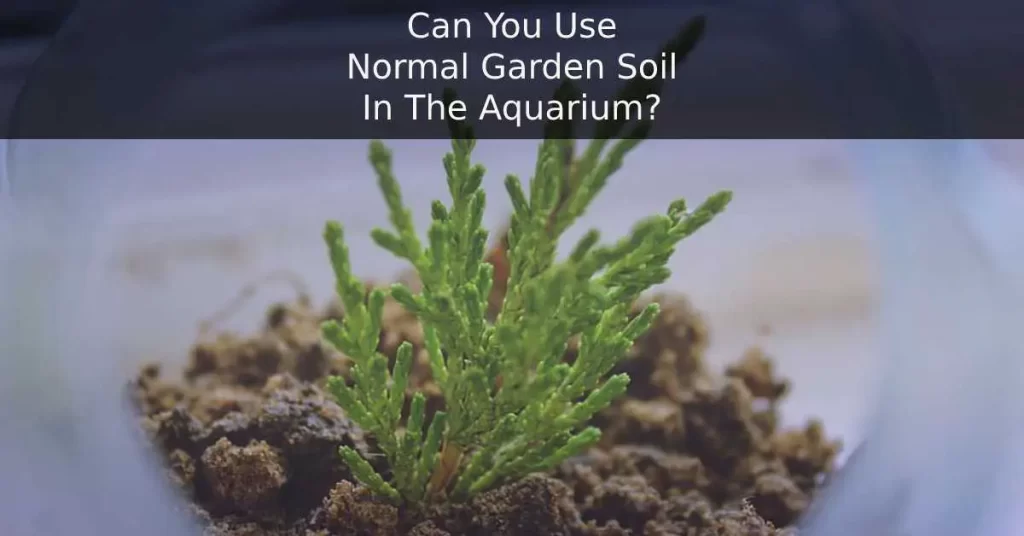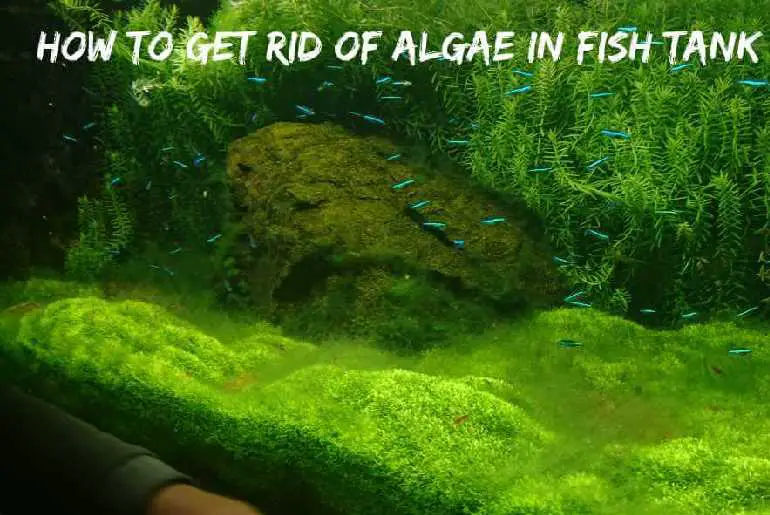Acquiring an aquarium raises various questions about its maintenance. Are you speculating whether beneficial bacteria are essential for your fish to survive in the tank or not?
The new aquarium needs beneficial bacteria residing in filter media for the well-being of your fish. Aquarium Filter Bacteria subtract the toxicity by converting ammonia produced by fish. Ammonia is first converted into nitrite then nitrate through the Nitrogen Cycle.
If you are wondering about the need for aquarium bacteria, this is the right place to learn about them. First of all, you need to know what an aquarium filter bacteria is and how it works.
Beneficial Bacteria: An Overview
Even the tiniest part of the earth plays an incredible role in balancing nature. Bacteria are the single-celled microorganisms visible only under a microscope. And, to our wonder, these microorganisms play an important role in the life of every living being on earth.
We have got the idea that the survival of every living being is entirely dependent upon the microscopic organism. However, bacteria are also very agents to cause most of the diseases and spoilage of food.
Beneficial bacteria are the team of good bacteria that provides essential support for the growth and improvement of living beings.
These bacteria help boost health conditions. It also keeps up the environmental balance for the aquatic beings present in the aquarium.
Beneficial Bacteria help in not only the decomposition of dead bodies but also fermentation. Along with that, they help in digestion, genetic engineering, pest control, bio-remediation, and medicines.
Bacteria are natural recycler. The beneficial bacteria convert decaying matters into important nutrients through various processes. Hence, fish keeping needs good bacteria for the well-functioning of the aquarium.
Related article: The health benefits of keeping an aquarium fish
Fish produces ammonia as the by-product. Beneficial bacteria play a vital role in the conversion of ammonia to nitrate through the nitrogen cycle.
Before diving into conclusions about the importance and necessity of beneficial bacteria, you must learn the basics. It is essential to know what types of bacteria are present in the tank. And how you are supposed to decide whether the given bacteria is beneficial or not.
What Types Of Bacteria Are Termed As Beneficial Bacteria For An Aquarium?
Nitrosomonas and Nitrobacter are two main types of nitrifying bacteria that are important for the aquarium. They are responsible for the smooth running of the aquarium. These two microorganisms carry out the nitrification step of the Nitrogen Cycle; This cycle helps in inorganic nitrogen production that fuels planktonic primary production.
The nitrogen cycle is the biogeochemical cycle for the conversion of the most abundant gas in the atmosphere, i.e., Nitrogen, into various chemical forms to make it available for the use of living beings.
Nitrosomonas
Nitrosomonas are gram-negative bacteria that belong to the Phylum Proteobacteria and are rod-shaped chemoautotrophic bacteria. These are the aerobic bacteria that can survive and colonize the presence of oxygen.
These bacteria are also considered useful in Bioremediation.
Nitrosomonas has a unique feature of converting ammonia into nitrite. And this process of conversing ammonia into nitrite is called Nitritation. You can say it is the second step of the nitrogen cycle.
In an aquarium, Nitrosomonas oxidizes the ammonia produced by fish into nitrite as a metabolic process. And, they give that Nitrite to the second beneficial bacteria in the tank to convert it into essential nutrients.
These Nitrosomonas bacteria play an important role in the nitrogen cycle. They start the process of providing nitrogen to aquatic plants while restraining carbon dioxide fixation.
Nitrobacter
Nitrobacter belongs to the same genus, the same phylum, even has the same shape as Nitrosomonas. However, there is a slight difference. This Nitrobacter converts the nitrite provided by Nitrosomonas into nitrate.
These are two aerobic bacteria that thrive in the presence of oxygen. Oxygen is the key element in their survival.
Two nitrifying bacteria Nitrosomonas and Nitrobacter, stay closely with each other. Hence, Nitrosomonas converts the ammonia into nitrite and makes it automatically available for Nitrobacter for further nitrification.
Unlike Nitrosomonas, these bacteria get the energy from the oxidation of ammonium ion, nitrite, into Nitrate. Hence, the nitration produces energy. The bacteria use the same energy for metabolism and carbon fixation.
The Nitrogen Cycle
In an aquarium, the nitrogen cycle is not different from the cycle in the atmosphere. It is less a cycle and a more biochemical course. This cycle includes the persistent chemical degradation of nitrogenous compounds: Ammonia to Nitrite and Nitrite to Nitrate.
The Nitrogen Cycle includes the following steps in an aquarium:
Ammonia Formation
Ammonia is deadly toxic to the fish living in an aquarium. However, fish is the main agent for the production of ammonia as fish urea and proteins. The decaying of the waste products of fish, plants, and other beings produces ammonia in an aquarium.
Related article: How to maintain the hardness of aquarium water
Nitrite Formation
The second step of the nitrogen cycle includes the conversion of ammonia into ammonium ion, i.e., Nitrite. When the Nitrosomonas bacteria oxidize the nitrogen present inside the ammonium molecule, Nitrite is produced. Nitrite is supposedly considered the most common cause for the death of fish in an aquarium. That is why it is presented to the second set of nitrifying bacteria immediately.
Nitration
As Nitrosomonas converts the ammonia into Nitrite. The second bacteria, Nitrobacter, comes into action to convert the nitrite into a less toxic nitrogen compound, Nitrate.
When the Nitrobacter oxidizes the ammonium ion into nitrite as a part of their metabolic process, the production of nitrate takes place. Nitrate is the end product of the nitrogen cycle.
Plants
And after the Nitrogen Cycle, the most important one happens when the plants remove and use the produced nitrates; nitrate consumption makes the water in the aquarium less toxic and healthy for the fish.
Related article: How to decorate a fish tank- Beginner’s guide
Is Beneficial Bacteria Essential In A Tank?
We can completely rely on bacteria for the decrease in the toxicity level. Bacteria play an important role in maintaining a suitable tank environment.
The bacteria present in the tank assure the conversion of nitrogen into suitable compounds for the plants. They indirectly help other aquatic beings as well. The bacterias also keep the toxicity level below, keeping out the aquatic beings from being poisoned.
Beneficial bacteria with the nitrogen cycle make sure your aquarium is livable for your fish; they offer essential nutrients to plants, making themselves boon to the well-planted aquarium.
Importance Of Beneficial Bacteria In A Tank
We have learned about the nitrogen cycle. Let us move on to learn more about why beneficial bacteria is important in a tank!
The Nitrogen Cycle
Good bacteria play a vital role in the conversion of bio-waste. The fish excretion produces bio-waste that is converted into food for plants present in the tank. These bacteria convert ammonia into nitrate by the process of the nitrogen cycle.
Related article: How to feed an aquarium fish?
Clarity Of Water
Beneficial bacteria remove decomposed and decaying plants and fish bodies to make the water clean in the tank.
Related article: Why do fish tanks get dirty so fast? How to clean a dirty aquarium?
Maintenance of pH
The decomposition and accumulation of waste cause a drop in the pH of water. These bacteria residing on the filter media help to clear out the wastes, in turn balancing the pH.
Low Toxic Level
The nitrogen cycle performed by bacteria removes the ammonia from the water. This cycle indirectly helps to decrease water toxicity. Ammonia and nitrite are highly toxic to fish.
Pollution Control
During the process of the nitrogen cycle, beneficial bacteria are converting the ammonia into nitrate. This cycle, in turn, implies the removal pollutants present in the water.
Role of Filter In The Growth Of Beneficial Bacteria In The Tank
After all this, it is okay to wonder about the process of introducing beneficial bacteria in an aquarium. Also, here is your answer to every confusion. There are few ways to introduce, but the simplest way to introduce these bacteria is through an aquarium filter.
The aquarium filter consists of these beneficial bacteria in its biological filter media section. These bacteria not only live there but also act as the main part for biological filtration.
You can call an aquarium filter a home for the beneficial bacteria as they live, colonize, and grow within its proximity. And your filter does not stop here. It also helps to transport these bacteria further into the wall, ornaments, substrates, and so forth of the aquarium.
Related article: Why Should You Use Aquarium Filter Floss?
The Time-Span For The Beneficial Bacteria To Grow In The Tank
The time-span for bacteria to grow in the tank depends upon the fact whether you have seeded aquarium or not.
But first, you need to know what seeding means. Seeding an aquarium means transferring the nitrifying bacteria from an already established aquarium to the new one.
In the new unseeded aquarium, the beneficial bacteria take 4 to 6 weeks to grow. It takes that long to complete one whole nitrogen cycle. However, it is different in the case of the seeded aquarium. Besides, it also gives a kick-start to the cycling process and completes it half of the time.
Does A High Amount Of Beneficial Bacteria Cause Harm To Aquatic Beings?
The crowd only welcomes chaos in the environment. Even sugar becomes bitter if consumed more. That is the same with beneficial bacteria in the tank.
The growth of bacteria to a certain limit is okay. But, when they start making a crowd on the aquarium, the problem and chaos start.
The water quality starts to degrade, leaving behind an unclear environment for the fish. The unclear water symbolizes the pollution brought upon by the beneficial bacteria; This pollution, in turn, stresses out the fish and overloads the work on aquatic plants.
When the growth rate of bacteria is way higher, it dooms the ecosystem of the aquarium.
How Can You Control Bacterial Bloom?
You already know that the high growth of beneficial bacteria can cause complications within the aquarium system. So, there is a quite simple way to control the mass growth of bacteria.
All you have to do is follow a simple procedure. You have to change 25 to 30 percent of water in the tank regularly. And along with that, cleaning the gravel with an aquarium gravel vacuum is a better remedy.
Related article: Is Water Change Harmful For Your Fish: How To Perform Water Change?
Is Tap Water Toxic To The Organisms Present In The Tank?
Even we, human beings, are not supposed to drink unfiltered tap water. And, here we are talking about sensitive microbes, beneficial bacteria, and of course, fish too.
Tap water has a high level of chlorine in it, which is neither good for fish nor the beneficial bacteria. The chlorine stresses the fish and those nitrifying bacteria; hence, it eventually brings on the death of both.
So, you want your new tank to act normal and favorable for both fish and beneficial bacteria. The best solution for it is to let the tap water sit for a few days in the tank. Besides, before adding fish or biological media, running the filtration process for the tap water will act like magic.
Aquarium Salt: Harmful For Beneficial Bacteria Or Not?
Aquarium salt kills the parasitic agents present in the aquarium, making it favorable for maintaining good health of the fish.
But, here we are talking about beneficial bacteria only, so the answer is quite simple. Aquarium Salt causes no harm to the beneficial bacteria, rather aids the Bacteria to make water parasite free.
Survival Span Of Beneficial Bacteria Without Fish In The Tank
Beneficial bacteria depend upon ammonia production for their metabolic activity to take place. They get the energy through ammonia’s oxidation to nitrate. Moreover, we know fish is the major source of ammonia as they excrete ammonia as the by-product of their body.
We cannot disagree on the point about the survival of beneficial bacteria depends on fish presence. However, there is a slight chance of their survival for 48 hours without it.
So here is the thing. If you want a well-functioning aquarium, then you need beneficial bacteria in it. That means they cannot be deprived of ammonia sources, i.e., fish, for more than two days.
Conclusion
In short, beneficial bacteria improve the water quality in your aquarium and enhance the safety of your fish. Beneficial bacteria play the main role in maintaining a toxic level that is suitable for your pet fish.
It has even helped us to keep aquatic beings, which are difficult to prosper in a confined environment. Also, it is best to install a filter with a biological media that provides enough space for bacteria to colonize.
Related article: An Aquarium On Balcony: Is It Really Possible?
You can rely on these bacteria for nitrate production and biological filtration. These bacteria are the assurance you need for the proper functioning aquarium. I hope you can maintain a proper balance of beneficial bacteria by reading this article!
Also Read: Easiest fish to breed- Beginner’s guide






